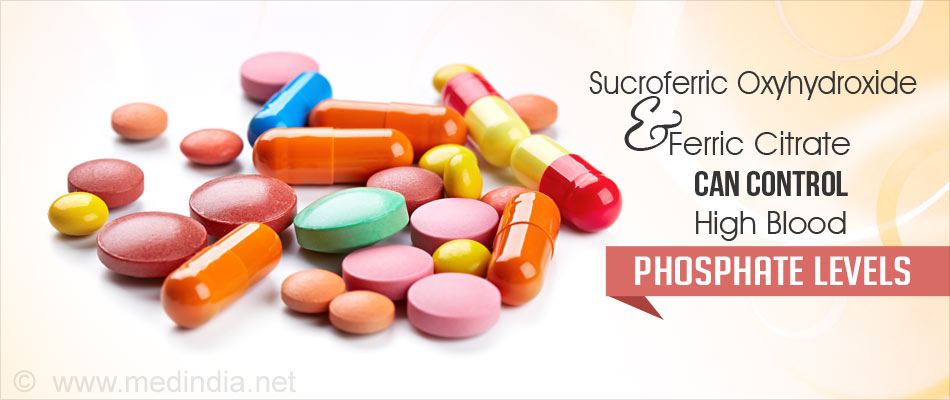
- High serum phosphate levels are commonly noted in patients with kidney failure.
- Calcium-based medications are commonly used, but can cause hypercalcemia (high calcium level in the blood). Aluminum and magnesium-based phosphate binders are no longer preferred.
- Sevelamer and lanthanum are relatively newer drugs in the treatment of hyperphosphatemia.
- The latest drugs approved for the condition are the iron-based sucroferric oxyhydroxide and ferric citrate.
Calcium carbonate, on the other hand, has been popular due to its effectiveness as well as its low cost. It can increase blood calcium levels, which should be watched for during treatment. Calcium acetate is also used, but it has side effects like nausea and vomiting, can prevent absorption of other medications from the digestive tract, and can cause high calcium levels though to a lesser extent.
Phosphate binders that followed the above were sevelamer and lanthanum carbonate. Sevelamer is used as two salts: hydrochloride and carbonate. When taken orally, it remains in the digestive tract and prevents absorption of phosphates into the blood. However, it can also prevent the absorption of several other medications given to the patient. The exact mechanism of action of lanthanum carbonate is not known.
The most recent phosphate binders in the market are sucroferric oxyhydroxide and ferric citrate, which hopefully will be devoid of the side effects of the older treatments. These contain iron, therefore besides their therapeutic effect in hyperphosphatemia, they may be able to address the problem of low iron content or anemia in patients with kidney disease and at the same time, avoid hypercalcemia, which is common with calcium-based treatments.
Sucroferric oxyhydroxide binds to phosphate in the digestive tract and prevents its absorption. It is approved for patients with chronic kidney disease on dialysis. However, it does release sugar, which is absorbed and can increase the blood glucose level in patients with diabetes. The iron may also cause adverse effects like altered taste, diarrhea and black stools.
Thus, it can be noted that even the newer drugs do have side effects. However, since the choice has increased, the appropriate drug can be chosen depending on the underlying characteristics of the particular patient.
- Stormont R, McCoy R, Bashir K, Malesker MA. New Pharmacotherapy Options for Hyperphosphatemia. US Pharm. 2015;41(3):HS18-HS.












